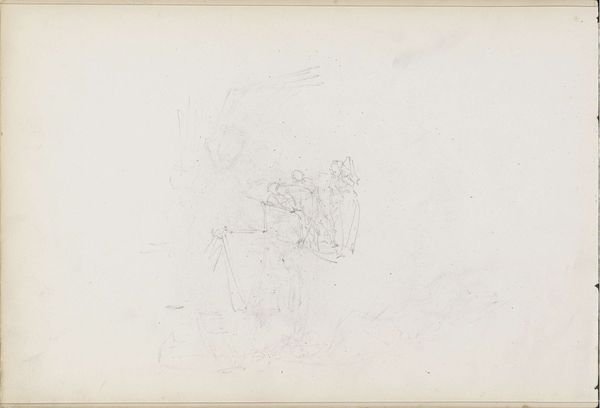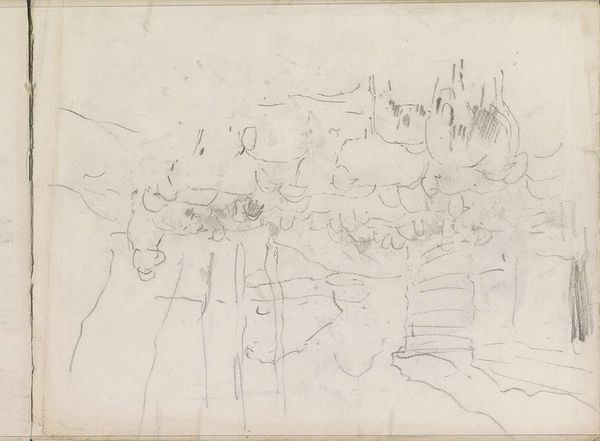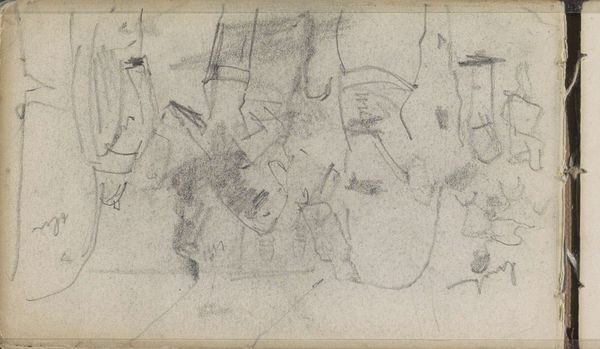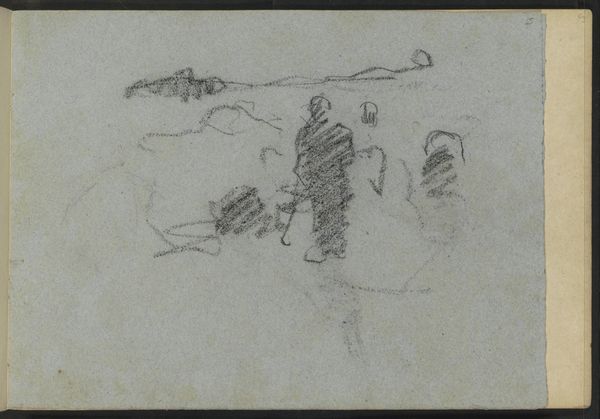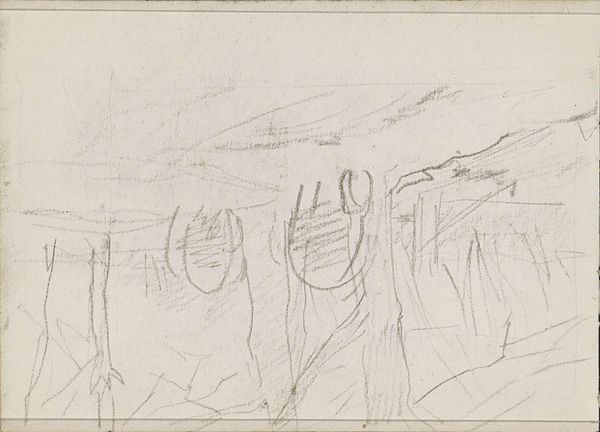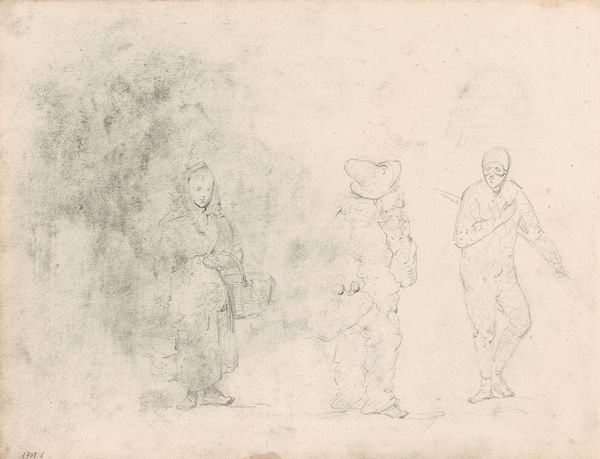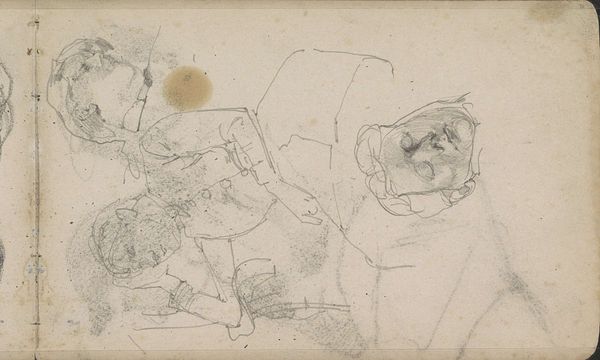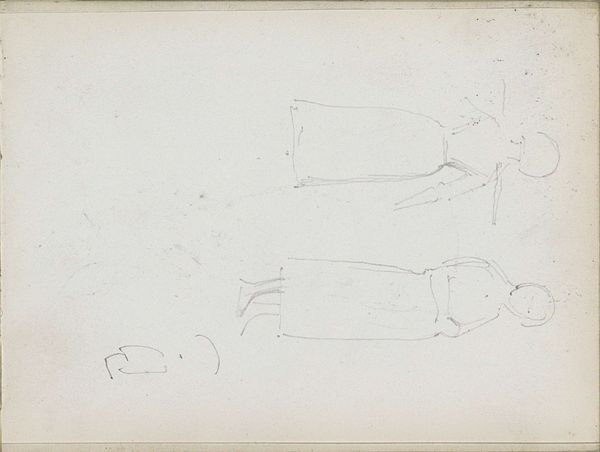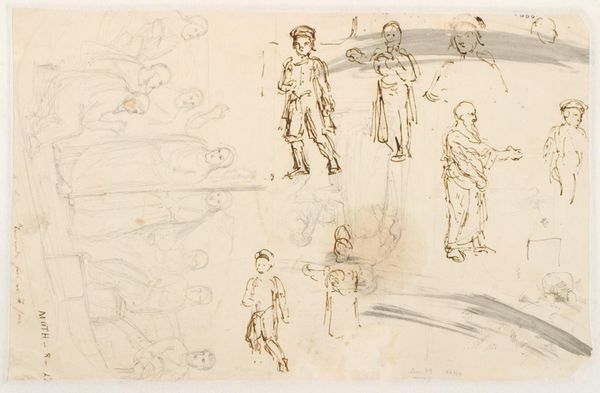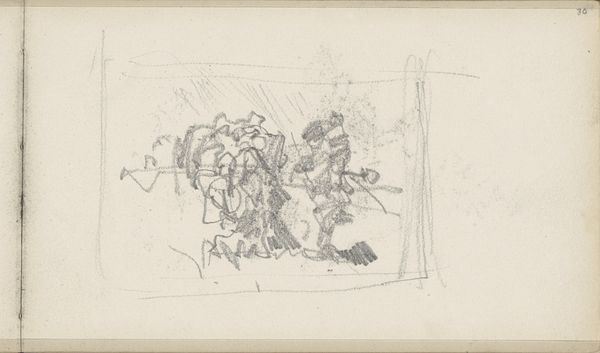
Copyright: Rijks Museum: Open Domain
Editor: So here we have "Girl with Hat," a pencil drawing by Isaac Israels, dating roughly between 1886 and 1934. It has a casual, almost fleeting quality. What strikes you about this particular work? Curator: I am interested in the immediacy afforded by pencil, in its capacity to record a direct encounter. Here, the hasty marks belie an art of close observation, focusing less on an aesthetic ideal of representation, and more on a document of materiality within a moment. Consider the paper, too; its manufacture, its eventual commodification. Editor: You mentioned the materials. What can the medium, pencil on paper, tell us about the context in which this piece was made? Curator: Think of Israels working, quickly capturing the scene before him. How does the availability of pencils and paper in the late 19th and early 20th centuries change the artistic process? Does mass production change drawing as it became untethered from its function in high art traditions, now intertwined with the world of commerce? This is no academic exercise; this is work. Editor: It's fascinating to think of it as a kind of material record, of the ready availability of supplies and Israels' interaction with them. Curator: Exactly. We might ask, who had access to these materials, who was depicted, and whose labor made it possible. By thinking about how it was made and from what, we start to see its role within social relations of that time. It reminds us that images have tangible histories and reside in specific circumstances. Editor: This definitely changed my perception of what might otherwise seem like a simple sketch. I see the piece and art history differently now! Curator: And that’s the exciting part, right? Connecting the concrete to the conceptual opens a range of interpretive possibilities.
Comments
No comments
Be the first to comment and join the conversation on the ultimate creative platform.
